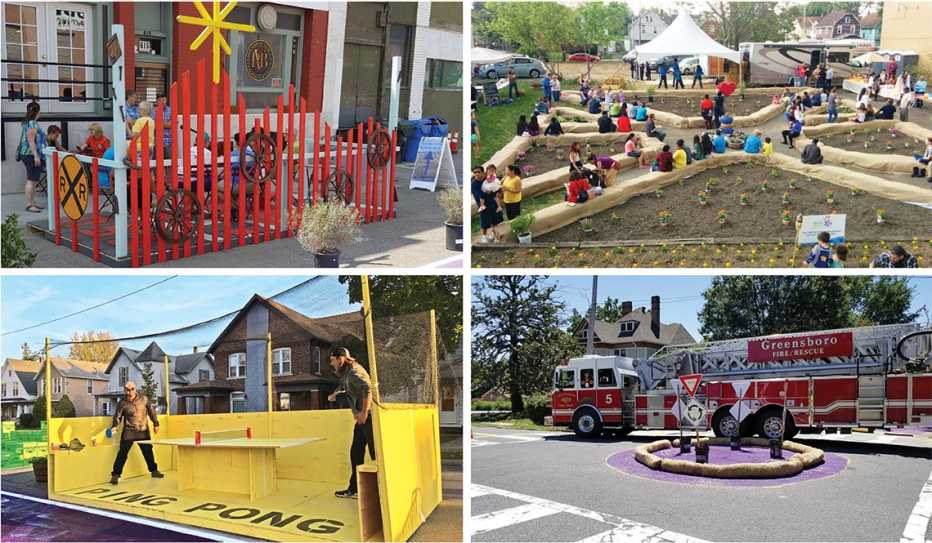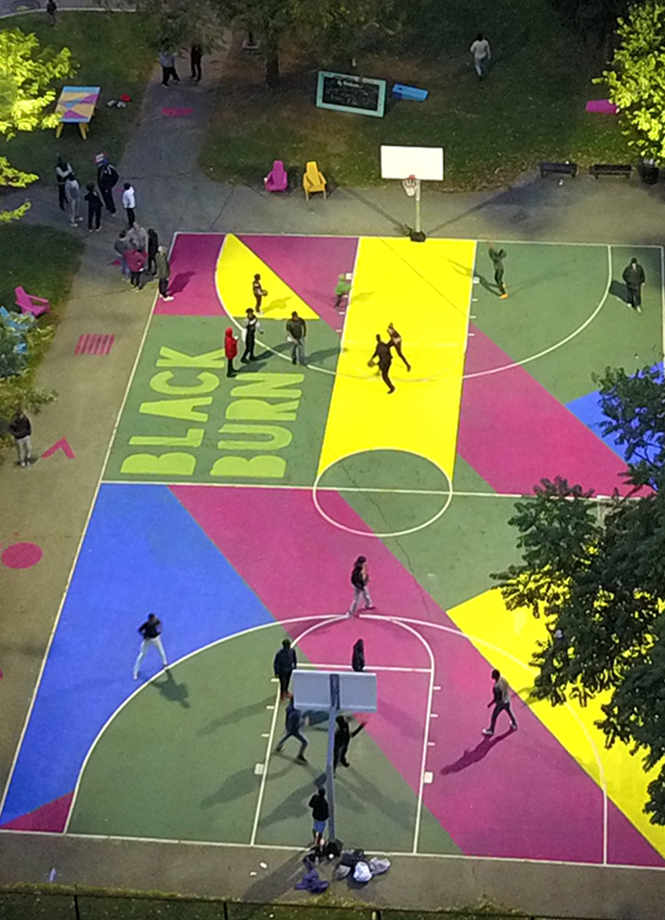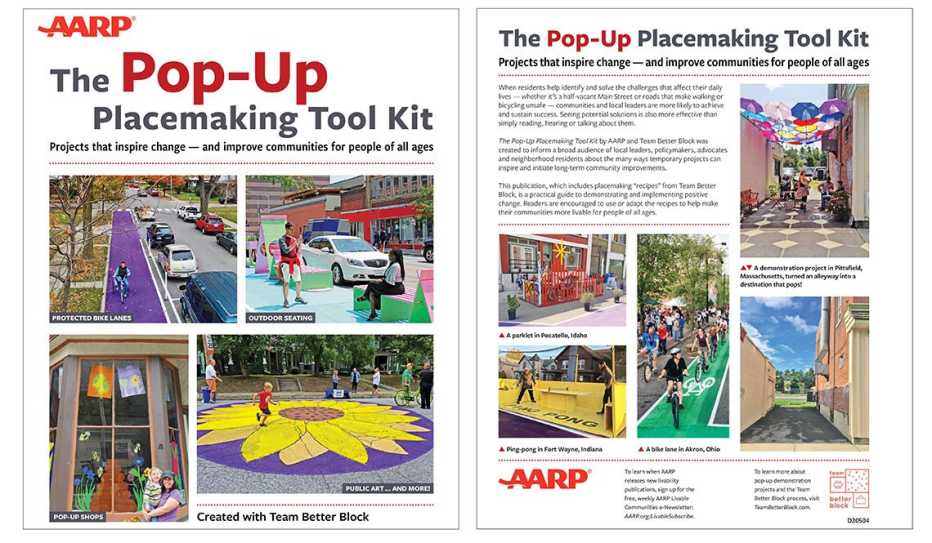AARP Hearing Center


Pop-up demonstration projects — also known as “tactical urbanism,” “do-it-yourself urbanism” or “better blocks” — typically involve community members working together to bring attention to overlooked spaces, address neighborhood issues, or demonstrate desired improvements within a public or sometimes private space such as a vacant building or underused lot.


What Is Placemaking?
The term “placemaking” refers to the work of improving a particular public space or overall area to make it more of a destination and shared gathering place. The Pop-Up Placemaking Tool Kit by AARP Livable Communities and Team Better Block was created to inform a broad audience of local leaders, policymakers, advocates and neighborhood residents about the many ways temporary projects can inspire positive community change.
This can be done through a rapid prototyping process — a “pop-up demonstration” — that uses lighter, cheaper, easily available materials to build interventions that temporarily improve a space.
After all, when it’s possible to illustrate a new idea through a temporary installation or demonstration, a proposed enhancement is better understood, supported and achieved.
Pop-up demonstration projects, which can be organized and implemented quickly or over time, help residents to propel positive community change.
A pop-up demonstration can take many forms (see below), and there are many ways a pop-up project can help solve common problems, such as stagnant economic activity, dangerously designed streets or a lack of community involvement.
4 Pop-Up Categories
- Traffic Calming: A roadway’s design impacts the speed and flow of the vehicles that travel along it. To reduce speeds and increase safety for pedestrians, cyclists and motorists, the design often needs to change. A pop-up demonstration can show a community that it’s possible for street to be both safe and efficient. A traffic calming pop-up project might use hay bales or plastic bollards to create a temporary roundabout or separated bike lane.
- Connectivity: In placemaking, connectivity refers to how people access and move between the places they need or want to go. Where there are no marked crosswalks, colorful paint can create a visible, designated pathway where drivers stop and pedestrians proceed.
- Public Spaces: People need places to gather - or at least spend a bit of time in a space other than their own homes or yards. A pop-up “parklet” or “pocket park” with seating can be easily installed in a parking spot or on a vacant plot. Creating environments that encourage social interaction can improve community cohesion.
- Programming: A pop-up demonstration isn’t effective if community members don’t see or engage with it. Music, food, games and giveaways are among the many ways to attract attention and broad community support.
8 Reasons to Do a Pop-Up Demonstration
- To Test New Ideas: Infrastructure projects are complicated and costly. Before diving into a full-fledged construction project, it makes sense to pilot innovative ideas to determine the best solution.
- To Encourage Community Involvement: The sense of community and belonging can be hard to achieve when there’s no place for residents to gather. It’s hard for neighbors to know one another when their primary interaction is to wave at one another from their moving cars. A pop-up project attracts and involves people and can serve as an open invitation to people of all ages to pop in for a visit.
- To Make the Case for Public Support: Often, opportunities for change appeal to community members but prove difficult to implement. Barriers might include restrictive zoning codes or a lack of financing and interest by government officials and other community leaders. A pop-up demonstration can raise awareness about a need and inspire residents and officials to pursue solutions.
- To Strengthen the Local Economy: As traditional economic development models shift from attracting outside corporations to fostering local entrepreneurship, pop-ups provide a way to highlight and energize nascent makers’ spaces, small business incubators, and local artisans and restaurateurs.
- To Manage Reinvention and Growth: The rapid redevelopment of a neighborhood can displace established businesses and residents. Pop- up demonstrations can be used to strengthen and integrate existing community leaders, residents and businesses into the new investment activities.
- To Engage New Residents: Demographic changes and employment trends result in people moving into and out of communities. Pop-up projects and events are a useful way to integrate and engage new neighbors.
- To Accelerate Decision-Making: It’s easy to become overwhelmed by the work, costs and possible pushback encountered when advocating for community change. Overthinking and overanalyzing a situation can slow the decision-making process and overall progress. The value of a pop-up demonstration is that it’s not permanent. So decisions can be made faster, ideas can be tested, and mistakes can be made and corrected. Whatever happens, lessons will be learned so improvements can move forward.
- To Inspire Change: The ultimate goal is for a pop-up project’s demonstrated benefits to become permanent features that improve the community.


Take a Look Inside
Page published November 2019



























































